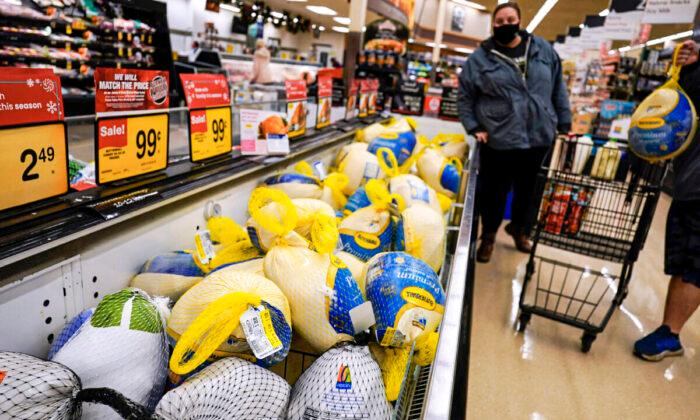January’s acceleration in the Consumer Price Index (CPI), which reflects inflation from the perspective of end consumers, marks the eighth straight month of prices rising faster than 5 percent year-over-year and a faster pace than December’s 7.0 percent pace.
On a month-over-month basis, the pace of headline CPI inflation held steady at 0.6 percent in January, matching December’s pace and delivering a fresh sign of inflation stuck in high gear.
Inflation Risks ‘Tilted to the Upside’
Not only is January’s annual pace of CPI inflation the highest since February 1982, when it hit 7.6 percent, it is also far above the Federal Reserve’s target of 2 percent as reflected in a separate but related inflation gauge, pressuring policymakers to tighten loose monetary settings to knock some of the wind out of surging prices.Noting that inflation risks are “tilted to the upside,” Mester said she backs raising the Fed’s key interest rate in March.
“While the Omicron variant may weigh on activity in the near term, the high levels of inflation and the tightness in labor markets make a compelling case to begin recalibrating the stance of monetary policy,” she said.
In her speech, Mester touched on the risk of a wage-price spiral, saying that if longer-term inflation expectations become de-anchored, price pressures could stay elevated for even longer.
“Allowing inflation to remain at high levels can lead firms, households, and financial market participants to expect higher inflation over the longer term. A rise in longer-term inflation expectations could then spill over into wage- and price-setting dynamics, leading to even more persistent inflation,” she said.
While Mester, like other Fed policymakers, expects some improvement in inflation readings later in the year as supply-side constraints ease and demand softens, she said that there was uncertainty around the timing and magnitude of the projected decline.
While Mester said the economic data doesn’t make a “compelling case” for a 50-basis-point hike in March, she stressed it was time for the Fed to roll back accommodative monetary policies more aggressively. She added that each FOMC meeting is going to be “in play” and the pace of rate hikes will depend on what happens with inflation and the economy.
Underlying Inflationary Pressures Rise
Meanwhile, so-called core CPI inflation, which strips out the volatile categories of food and energy and is considered a better measure of underlying inflationary pressures than the headline CPI figure, also picked up its pace in January.Core inflation rose to an annual 6 percent last month, after December’s 5.5 percent pace, BLS data showed. Month-over-month core inflation hit 0.6 percent, compared to December’s 0.5 percent pace. Consensus forecasts called for a 0.5 percent rise in the monthly reading and a 5.9 percent pace of annual core inflation.
“The price pressures on households just don’t end," Bankrate Chief Financial Analyst Greg McBride told The Epoch Times in an emailed statement.
“Not only have home prices jumped 20 percent in the past year, but now many rents are too, rising 0.5 percent in the past month alone. Nothing squeezes household budgets more than the outsized increases we’re currently seeing on costs for shelter and housing,” he added.
McBride said Fed moves to dial back easy money settings would take some wind out of demand but do nothing to fix the supply-side constraints, suggesting inflationary pressures would take longer to lose steam.
“While today’s report is elevated, forecasters continue to project inflation easing substantially by the end of 2022,” Biden said.
Biden added that his administration would do all it can to “win this fight” against surging prices, singling out such measures as shoring up domestic supply chains, pushing for cheaper prescription drugs, and promoting more market competition.





